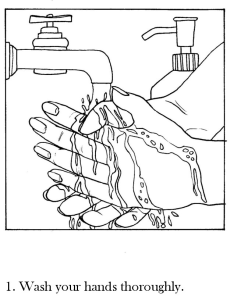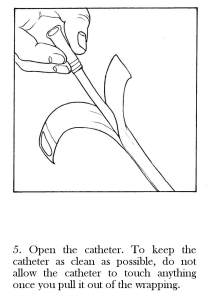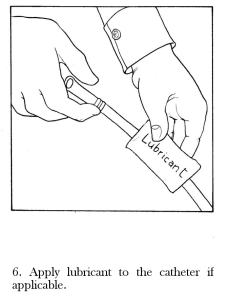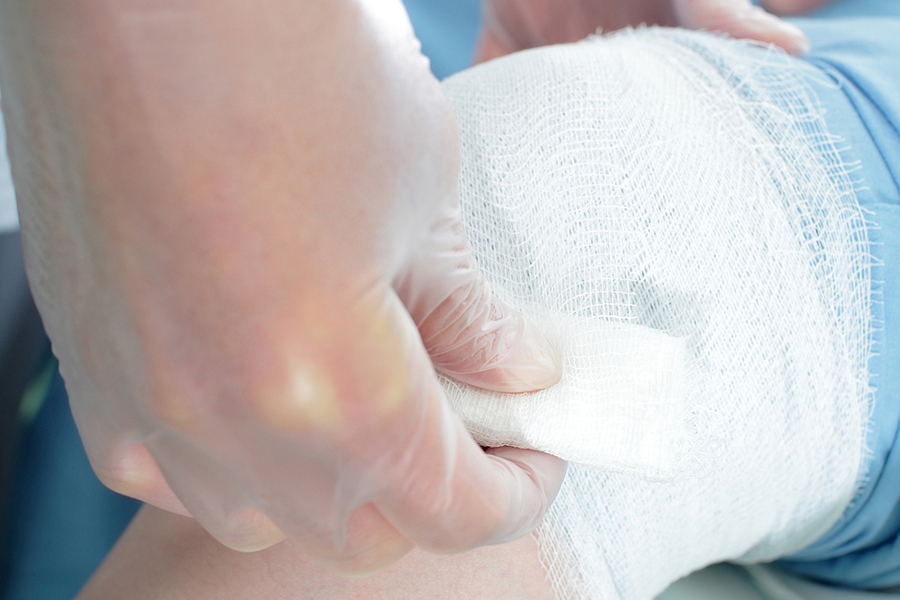Although intermittent self-catheterization may be more intimidating than a Foley (indwelling) catheter, there are some definite advantages of intermittent catheterization if it is an option for you. The biggest advantage of self-catheterization is having the freedom to choose when and where to empty your bladder, giving you more control over your life. Using a single-use intermittent catheter also reduces the risk of urinary tract infections (UTIs) compared to an indwelling catheter.
Follow these 10 steps for safe, simple self-catheterization:
How to use an Intermittent Catheter (illustrations below)
- Wash your hands thoroughly.
- Set out all necessary supplies – these can include a mirror, the catheter, water, soap and/or a sterile wipe.
- Position yourself in front of the toilet or in front of a collection container.
- Wash or sterilize around the urethra. For women, wash from front to back, never re-using a wipe. For men, wash in a circular motion, starting at the urethra and working your way out.
- Open the catheter. To keep the catheter as clean as possible, do not allow the catheter to touch anything once you pull it out of the wrapping.
- Apply lubricant to the catheter if applicable.
- For women, gently open the labia with your fingers. For men, hold penis straight out from the body and angled slightly upward toward your body and gently squeeze the head of the penis to very gently to open the urethra.
- Insert the clean or sterile catheter until urine begins to flow. Gently push the catheter about one inch further into the bladder after urine begins to flow.
- When the urine stops flowing, shift position a few times to ensure all urine is emptied, then slowly remove the catheter
- Wipe the insertion site of any urine, throw away the catheter and wash your hands.
How Frequently Should I Self-Catheterize?
In most cases, you should self-catheterize about every 4-6 hours in a clean environment. It is also recommended to catheterize before going to sleep and directly after waking up. This will help to prevent distention of the bladder. Self-catheterizing on a regular schedule 4-6 times a day will also reduce your risk of UTIs and bladder infections from urine sitting in the bladder for extended periods of time (source: https://www.urotoday.com/tags/clean-technique-self-catheterization.html).
This article was written by a contributing author for Shield HealthCare. This information does not replace the advice of a medical professional. If you have any questions or concerns, please contact your doctor.
For more information, see related articles and helpful catheter and UTI resources here:
- How to Safely Catheterize in a Public Restroom | Ask Aaron
- Preventing Catheter Associated UTIs (CAUTI) Webinar Video/Slides
- Types of Catheters: Catheters 101
- Assistive Technology Part 1.2: Personal Care – Bladder Tools
- Video & Slides: Troubleshooting Issues with Catheters Webinar
References:






















 I have progressive MS and I find it hard sometimes to have a positive attitude. How do you reach out to others?
I have progressive MS and I find it hard sometimes to have a positive attitude. How do you reach out to others?






